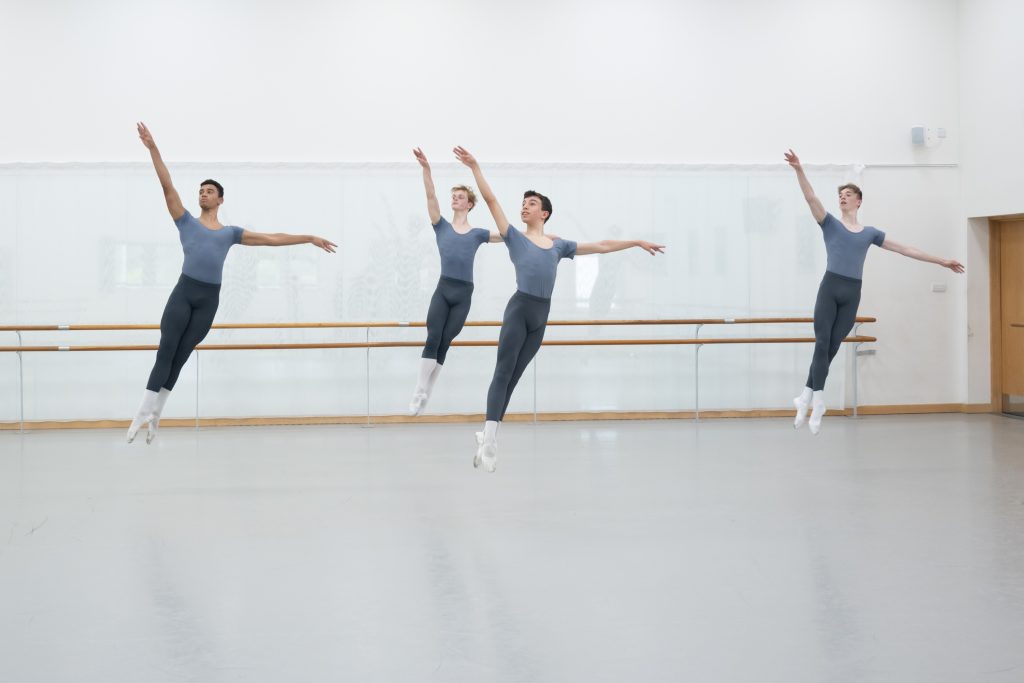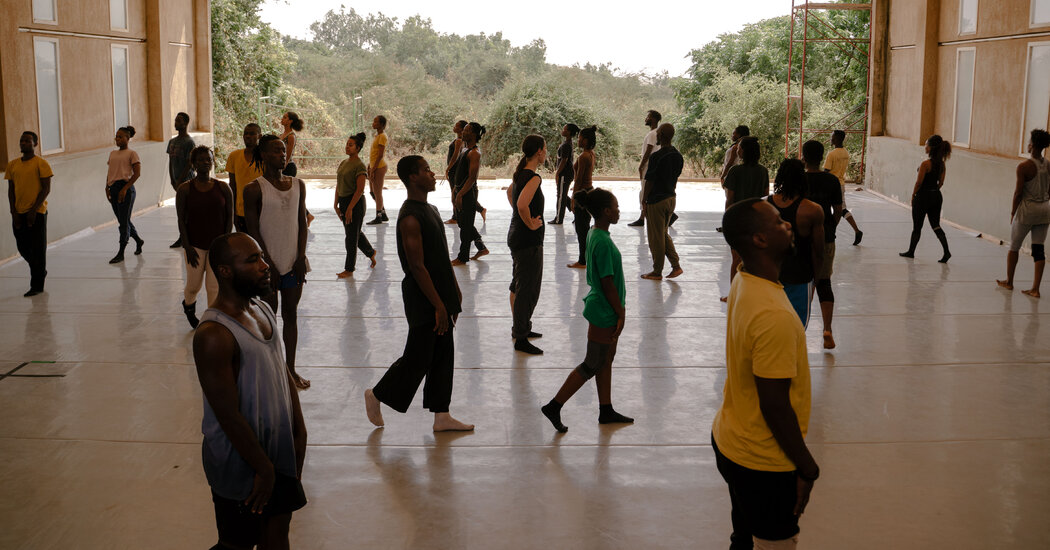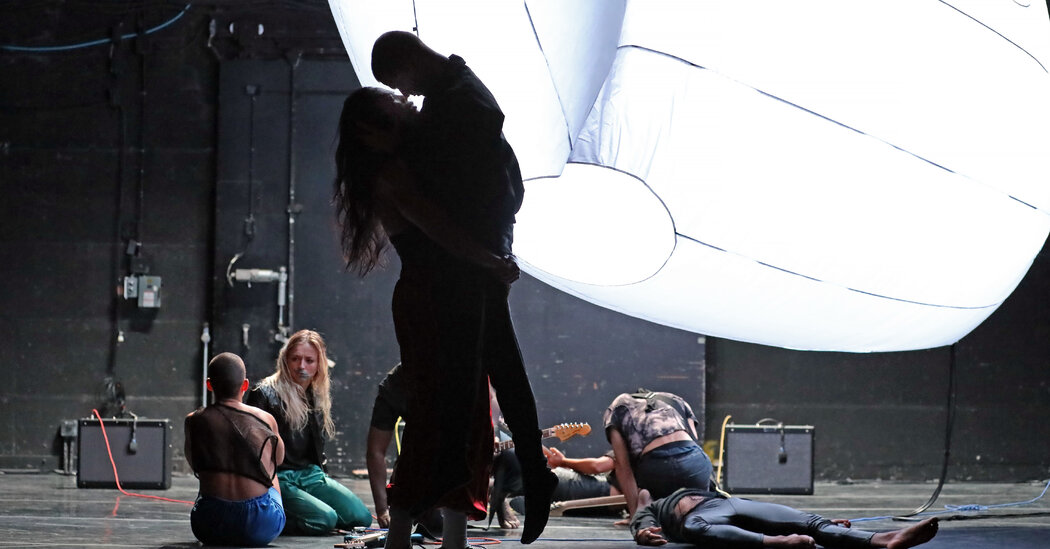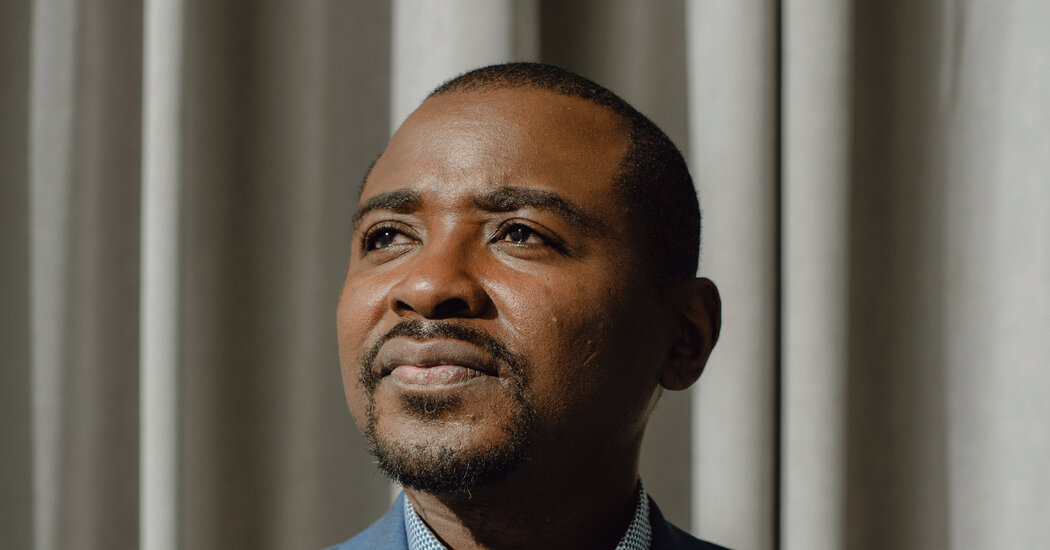Robert Battle Had a Wide Vision of What Alvin Ailey Could Be
[ad_1]
When Alvin Ailey American Dance Theater opens its annual season at New York City Center on Wednesday, it will be missing an important person: Robert Battle, the company’s jovial artistic director.
Citing health reasons, Battle, 51, abruptly resigned this month, telling The New York Times in an email that he planned on spending more time with his family and focusing on his health. As news of Battle’s sudden departure spread around town, the reaction of confused disbelief went something like, “What!?”
The job of artistic director at a large company is probably less creative than it ought to be. But Battle, who took on the position in 2011, gave the impression that, beyond his public appearances and meetings with donors, he had a long term plan: to modernize the Ailey company — a venerable, predominantly Black ensemble — and to expand its repertory and its place in contemporary dance.
(Matthew Rushing, the company’s associate artistic director, and a distinguished former Ailey dancer, will run the company until a replacement is found for Battle.)
As the search for a new artistic director begins, my fear is this: The board will pass the torch to a dancer with vast experience inside the organization, but less experience watching dance in the larger world. The idea of watching should be obvious, but so many dancers who attain leadership positions seem to commission new choreography based on how the movement might feel on their bodies — not how it looks or the power it conveys. And then the repertory becomes superficial or, worse, sentimental.
Naming Battle as artistic director was a surprise in the first place. He had never been a member of the company; he had never danced Ailey’s over-performed masterpiece “Revelations” (1960). But Battle, who studied at the Juilliard School and was a member of Parsons Dance, had choreographed for Ailey and led his own company, Battleworks, which disbanded when he took over the new job. He had real-world experience and that was a strength.
He updated Ailey’s repertory without hogging the choreographic spotlight for himself. And his taste in choreography was mercifully broad. After years of great dancers’ doing their best to elevate weak dances, this was refreshing. I didn’t love everything he chose or commissioned, but I sensed it was there for a reason.
All the while, he spoke about Ailey dancers with the kind of penetrating insight that celebrated their individuality as movers and as people. In an interview with The Times when he got the job, he said: “I’m interested in new conversations around how we view these dancers and their abilities. I see the opportunity to introduce new choreographers that are not necessarily ‘new,’ but will show the dancers new ways.”
He did that. Dancers showed their abilities in many memorable ways, from performing in Ohad Naharin’s entrancing “Minus 16” — where the choreographer’s movement language, Gaga, is front and center — to more contemporary ballet works, like Jiri Kylian’s “Petite Mort” and Wayne McGregor’s “Chroma.” Ailey was claiming dances, good and bad, from the European canon as its own. And he cultivated talent: Jamar Roberts became the company’s first resident choreographer under Battle’s watch, creating engrossing works like “Members Don’t Get Weary” and “Ode.”
The company’s first two-act work, the moving and momentous “Lazarus,” by the hip-hop choreographer Rennie Harris, came under Battle’s leadership, too. And there was range, including dances by Twyla Tharp — the sort that even ballet companies struggle with because of their rhythmic complexity and groove. “Roy’s Joys,” set to recordings by Roy Eldridge, is abundant with layers of vernacular dance, ballet and modern — everything to grow a company of dancers, and grow they did under Battle.
That mix of new and the unexpected old was also important in the bigger picture of dance — “Roy’s Joys” (1997) was granted a second, much-needed life at Ailey. Carolyn Adams, a former Paul Taylor dancer, was a crucial mentor for Battle, and one of his first steps was to introduce the Taylor repertoire to the company. Why had no one ever thought of that? Alvin Ailey studied with Martha Graham; Taylor was in her company. This was lineage up there on that stage. I’ll never forget the invigorating sight of Ailey dancers performing Taylor’s “Arden Court,” a bold, crisp example of showing them, as he said, in new ways.
Not everything was lasting or important, of course. There weren’t enough new works by women of substance, as usual. But Battle branched out, and as he dusted off the Ailey company, he led it into the 21st century with a public persona that was as fresh as his artistic agenda. Delivering curtain speeches, he was unpretentious and loose; his words were true invitations to the dance — they swung.
The announcement of Battle’s resignation was made less than two weeks before the company’s annual City Center engagement, a blockbuster event that draws rapturous crowds to the theater for their holiday fix of “Revelations.” Again, the timing, and the suddenness of it, are strange.
The Ailey organization presents itself as running on joy and community, and yet it’s also a brand. That brand is stronger than any individual — including Battle and Jamar Roberts who, seemingly, one day just stopped being the company’s resident choreographer. The Ailey organization will continue without Battle, but I will miss the sense of history and heart he brought to it all.
[ad_2]
Source link














